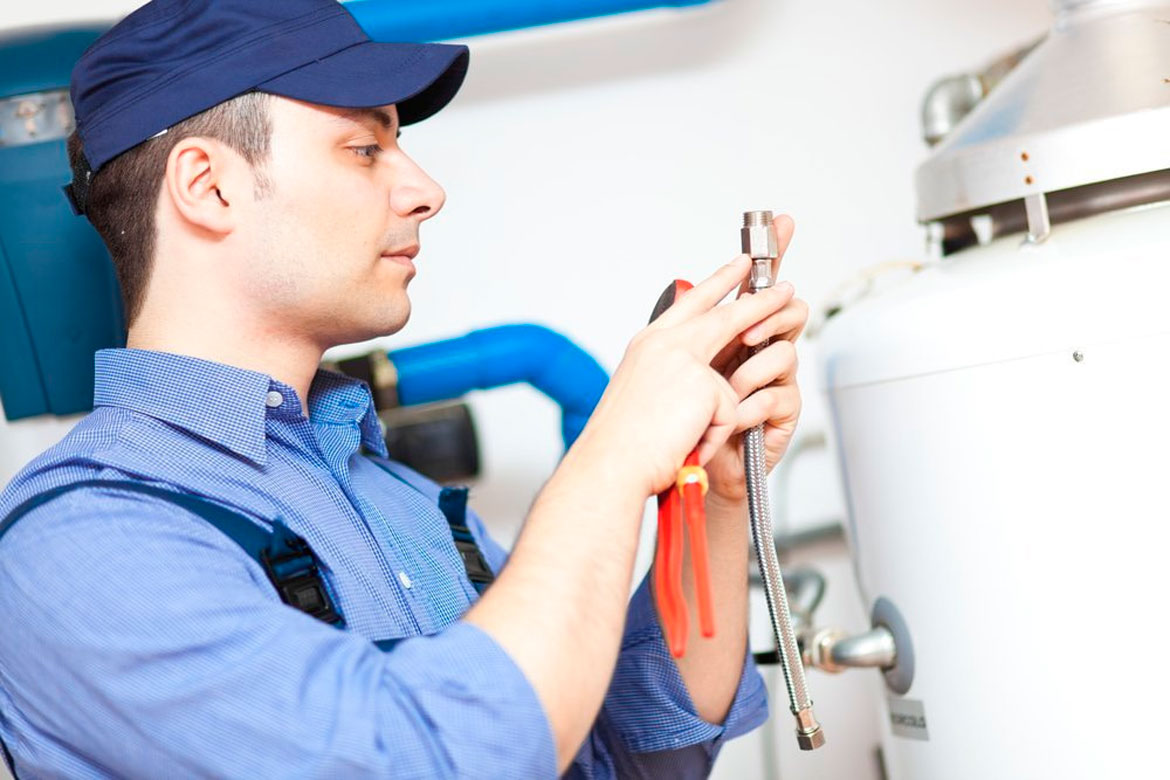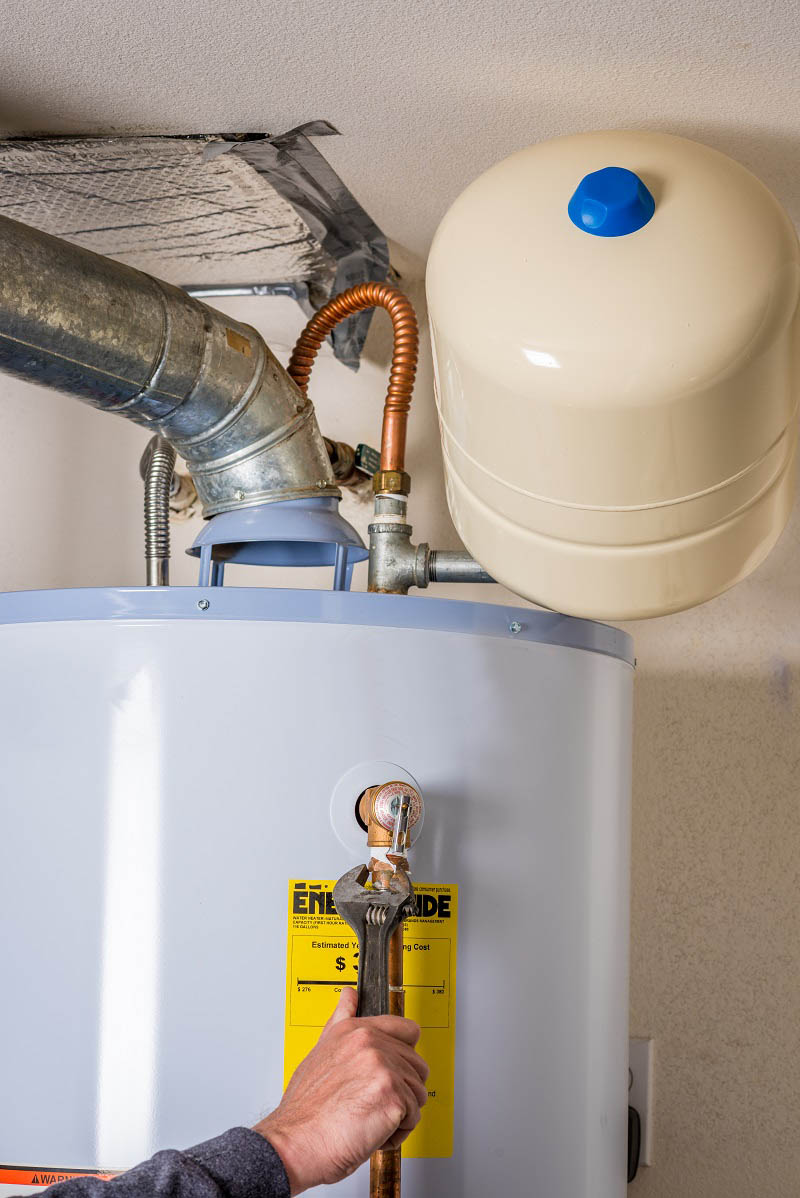Here in the next paragraph you will discover a lot of really good answers regarding Maintaining & Draining a Water Heater.

Whether it lies in the cellar or a different area, damaged hot water heater can create stress and anxiety. A typical system holds 80 gallons, so an over night leakage will lead to a flood. This results in major home damage with soaked wall surfaces and floorings. Besides, having no hot water supply is likewise problematic. If you are dealing with these concerns, bear in mind of the following:
Shut Off Source Of Power
Before calling the plumber, shut down a gas hot water heater by turning the temperature level dial. This is usually located at the top of the thermostat. Switch off the circuit breaker if you have a model that runs on electric power. This will prevent electrocution, especially if there is a leak as water is a conductor. Usually, the heating element shuts off when the water strikes a specific temperature level. With a damaged tank, it may malfunction. Sufficing off ensures you remain risk-free.
Cut Off the Cold Water Supply
Cut off the tanks faucet water supply from the source. This goes from your major water line into the tank. When your tank remains in good condition, the cold water stops filling up when the storage tank is full. Yet because it is dripping, the water will certainly continue to stream. Close the shutoff discovered on top of the heating system. Rotate this clockwise to close it off. If you can not discover it or reach it, you have to turn off that primary supply of water line outside your building.
Call the Plumber
After doing the first 2 safety and security actions, you need to call your plumber to come right away to deal with a ruptured water heating system. There are typically indicators that your aging water heater has debris build-up in the interior.
Rather, as soon as you spot these indicators, have actually a specialist come to examine your water heating unit say thanks to. Typically, water heating units have a life-span of regarding 8 to 12 years.
Tidy up Residential property
After calling the plumber, record damages by remembering as well as images so you can assert your property owner's insurance coverage. From there, begin the instant clean-up. Obtain any kind of vital valuables to avoid additional soaking. Then, remove any type of standing water to prevent mold and mildew and also mildew growth. Use that to drain pipes the water if you have a submersible water pump. Otherwise, the standard container technique will also function. Try to wipe out everything, consisting of baseboards and also walls. Maintain them running to maintain air distributing if you have an electric fan as well as dehumidifier. This will certainly help deter mold and mildew development.
Bear in mind, if you notice any problems with your hot water heater, call the pros right away. You can not take this trouble gently due to the fact that a malfunctioning thermostat can elevate water temperature to an alarmingly high degree, leading to accidental burns. A damaged heating unit stress relief valve can additionally cause an explosion. For finest results, obtain an annual check so your unit gets checked, cleaned up, drained, and filled up, ensuring optimal efficiency.
Whether it is located in the basement or a separate room, busted water heating systems can trigger stress and anxiety. Prior to calling the plumber, shut off a gas water heating unit by transforming the temperature level dial. After doing the very first two security steps, you have to call your plumber to come right away to take care of a ruptured water heating unit. If you have a completely submersible water pump, utilize that to drain pipes the water. Remember, if you see any problems with your water heater, call the pros right away.
8 REASONS YOUR HOT WATER HEATER IS NOT WORKING & HOW TO FIX
Water Heater Problems & Solutions
Loose or Damaged In-Line Valve
Unlike a water leak near the bottom of your water tank, a water leak on top of your system can be easily fixed. A common cause of water tank leaks includes a loose in-line valve. This is a handle that is located at the top of the water tank that is engineered to activate or deactivate the flow of water. To fix this problem, you will need to secure the nut that holds the ball or in-line valve in its location. If the leak becomes more severe once it is tightened, you will be required to travel to your local hardware store to purchase a new in-line valve for your water heater.
Damaged Pressure Relief Valve
Most types of water heaters are equipped with a pressure relief valve that is engineered to discharge pressure from the water tank when it becomes too high. If this valve on top of your water heater begins to leak, we recommend purchasing a new one online or from your local store. The process of removing and replacing pressure relief valves is not complicated.
No Warm Water
If you have an electric water heater in your home, the most typical cause of a lack of warm water is a broken heating element. Your water heater is equipped with two heating elements that are tasked with heating incoming water in the water tank. Once a heating element begins to malfunction, you will have little to no hot water to use for showering, cleaning, and laundry.
Low Supply of Hot Water
Are you continuously running out of warm water? This issue may be a byproduct of a cracked dip tube. This tube is engineered to push cold water to the base of your water tank to be heated. Once a crack or hole begins to form in the dip tube, the incoming supply of cold water may be released near the top or middle of your tank. As a result, the cold water on top of the tank will be sent to the faucets and showers in your house. This hot water heater problem can only be fixed by replacing the dip tube on your system. Since the process of installing a new dip tube is complex, we recommend calling a certified technician for help.
A low supply of warm water may also be a signal of excess sediment buildup in your water tank. As your water heater reaches the middle of its life cycle, minerals in water including magnesium and calcium will begin to collect at the base of the water tank. As the minerals continue to grow, there will be less room in the water tank to store hot water. To resolve this problem, flush your water heater to remove the excess minerals.
Water is Too Warm or Cold
If the water in your shower feels uncomfortable hot or cold, you can adjust the temperature of your water by changing the settings on your thermostat. Setting the temperature to 120 degrees Fahrenheit may help you save money on your utility bills. This is an excellent temperature to use if you’re worried about scalding or skin irritation. Does this temperature feel too cold? You may also adjust the thermostat to 140 degrees Fahrenheit to make your showers more pleasant. If your hot water heater is not working when you change the temperature, this is an indicator of a broken thermostat. Immediately find a certified plumbing or heating contractor in your area to repair or replace your thermostat.
Low Water Pressure
Low water pressure is not always caused by a malfunctioning water heater. If you live in an older home with smaller water pipes, the flow of water will be restricted prior to reaching our kitchen or bathroom skins. The only way to eliminate this hot water heater problem is to connect new ¾-inch water lines to your system. Another type of problem that may negatively impact your water pressure includes calcium deposits in water pipes.
As magnesium and calcium begin to form in your pipes, the diameter of your water lines will become smaller. As a result, the warm water from your water heater will not be able to travel in an efficient manner to your sinks or appliances. Since the process of replacing water pipes includes removing drywall, an average homeowner that does not have a plumbing license will not be able to fix this hot water heater problem.
https://www.wmhendersoninc.com/blog/8-reasons-your-water-heater-is-not-working-how-to-fix/

Hopefully you enjoyed reading our section on Water Heater Burst. Thank you for taking a few minutes to read through our posting. Remember to take the time to promote this content if you appreciated it. We enjoy reading our article about Broken Water Heaters.
End your worries, dial!